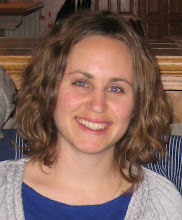- Reading: I didn't really learn much from the reading we did. The articles seemed very basic and frankly, uninteresting. I would have preferred more challenging or thought provoking reading, if any.
- Class time. The exercises given for group work could have been completed outside of class - then we could have used that time to cover more class material. It was nice to have that time so that we didn't need as many meetings outside of class... but I think that time could have been better used. I do appreciate the feedback that you and guest lecturers gave during that time though.
- I liked the videos and found them inspiring. I would have liked to have been "required" to watch more (otherwise I tend to not get around to it) - and I liked the blogging aspect of the class as well. I thought it did a good job of challenging me to process and reflect on the material, etc.
- I really enjoyed the guest lecturers - specifically Architecture for Humanity. She did a great job of explaining her company and business - how it works and why - and I really appreciated her transparency and willingness to walk through that with us. I would have liked more Bay area businesses to do similar things.
- Lastly I liked hearing stories about Maria and Christopher's business - specifically how certain problems were handled, etc. (The more personal stories as opposed to general information not relating to any specific situation.)
Thank you!



